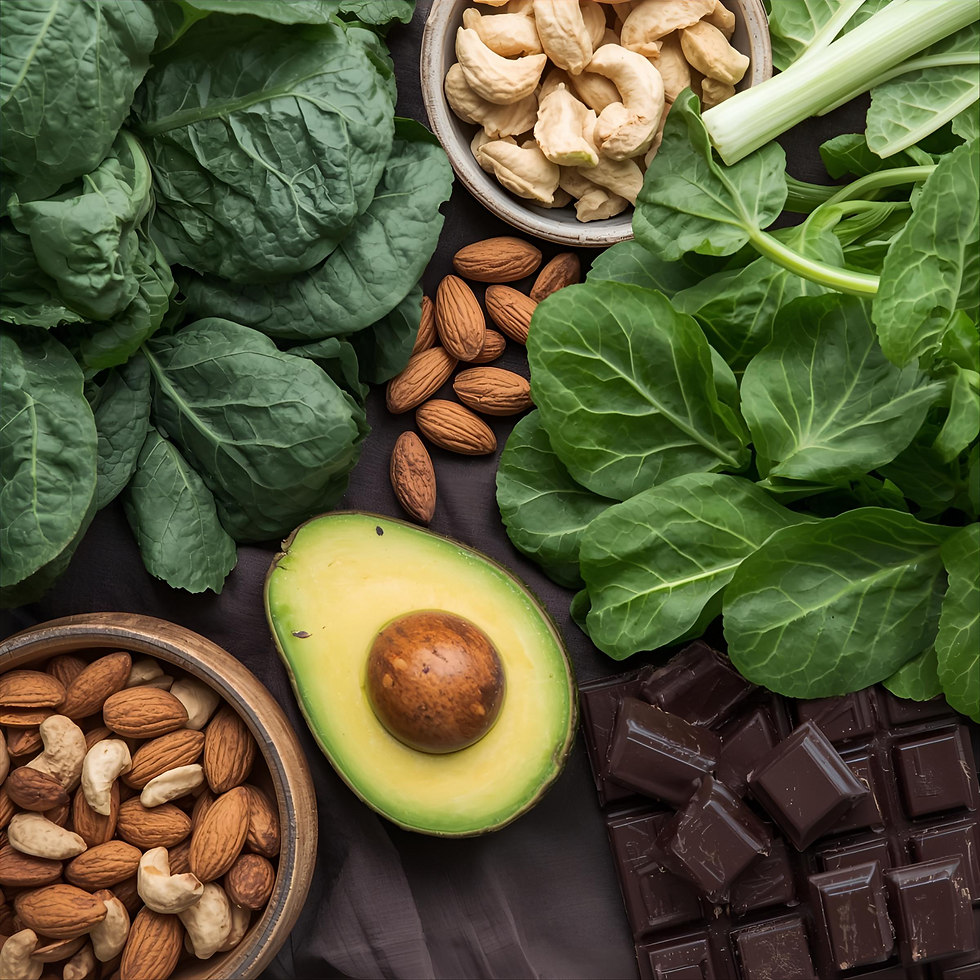Understanding Seed Cycling and Does Science Support It
- Emma Hammond

- May 16
- 3 min read
Updated: Jul 28
In the ever-evolving world of natural wellness, seed cycling has gained popularity as a gentle and holistic approach to hormone balance. You may have seen it on social media or heard about it from a friend, but what exactly is seed cycling—and does science back it up? Let’s dive in.

🌱 What is Seed Cycling?
Seed cycling is a nutritional practice that involves eating specific seeds at different phases of your menstrual cycle to help support hormonal balance. The idea is rooted in the concept that certain seeds contain nutrients that may influence the production, metabolism, and detoxification of oestrogen and progesterone—the two primary female sex hormones.
Here’s how it typically works:
Follicular Phase (Day 1 to Day 14):Eat 1 tablespoon each of ground flaxseeds and pumpkin seeds daily.🧠 Goal: Support oestrogen levels as they rise.
Luteal Phase (Day 15 to Day 28):Eat 1 tablespoon each of ground sunflower seeds and sesame seeds daily.🧠 Goal: Support progesterone production.
These seeds are usually ground to aid digestion and absorption, and can be added to smoothies, yoghurt, porridge, or salads.
If your cycle is longer than 28 days, take the Follicular Phase seeds until you ovulate, then switch to the Luteal Phase seeds. If you don't know when you ovulate, follow the Follicular Phase for 14 days, then switch to the Luteal Phase seeds.
🧬 What Nutrients Are Involved?
Each seed used in the cycle contains specific compounds thought to help balance hormones:
Flaxseeds: Rich in lignans, which may help modulate oestrogen levels.
Pumpkin seeds: Contain zinc and magnesium, which support hormone production.
Sunflower seeds: High in selenium and vitamin E, both linked to progesterone support and detoxification.
Sesame seeds: Another lignan-rich seed, also containing zinc, which may promote hormone synthesis.
🔬 Is There Any Scientific Evidence?
Here’s where things get a bit more nuanced.
Seed cycling itself hasn’t been studied in clinical trials, so there is currently no direct scientific evidence proving that eating these seeds in this specific rotation will balance hormones or regulate menstrual cycles. That said, some components within the seeds have been individually studied.
Flaxseeds have been the most researched. Some small studies suggest flaxseed consumption can impact oestrogen metabolism and may have mild hormone-regulating effects.
Nutrients like zinc, magnesium, and vitamin E are indeed vital for reproductive health, but their effects from food sources specifically in seed cycling patterns haven’t been tested.
So, while the individual nutrients have biological relevance, the structured approach of seed cycling remains largely anecdotal at this point.
🌸 Should You Try It?
Many people who try seed cycling report feeling more in tune with their bodies and experiencing benefits such as more regular cycles, reduced PMS symptoms, or clearer skin. Whether that’s due to the seeds themselves, overall dietary improvements, or the placebo effect, it’s hard to say.
The good news? There’s little to no harm in trying seed cycling, especially if you enjoy seeds and want to add more fibre, healthy fats, and micronutrients to your diet. Just make sure to:
Use fresh, ground seeds for maximum absorption.
Store seeds in the fridge or freezer to preserve their oils.
Consider speaking with a healthcare practitioner if you’re managing hormone-related conditions.
🌼 Final Thoughts
Seed cycling is a gentle, food-based approach to hormonal wellness. While science hasn’t confirmed its efficacy yet, it can still be a nutritious and mindful addition to your self-care routine. As with any wellness trend, what works for one person may not work for another—so it’s all about listening to your body and making choices that support your individual health.



